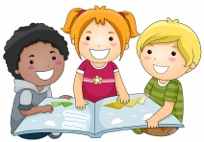The new Level 3 Early Years Educator (EYE) qualifications launches this September. There are some significant changes in the new EYE criteria, which focus on early education and school readiness and include an understanding of synthetic phonics in the teaching of reading and supporting children’s early literacy.
EYE criteria
All awarding organizations are currently redeveloping their existing qualifications in order to meet the National College of Teaching and Leadership criteria for the EYE. Subject to Ofqual approval, these new qualifications will be available for first teaching in September 2014. This will include revised versions of the BTEC Level 3 Nationals in Children’s Play, Learning and Development in addition to the CACHE Level 3 Diploma in Early Years Education and Care.
Many of the EYE criteria are comparable to those in existing Level 3 early years qualifications and require only minimal changes to the content of your teaching. However, some of the criteria which focus specifically on school readiness will present different challenges. For example, in Unit 1: Support and promote children’s early education and development:
1.7 Understand systematic synthetic phonics in the teaching of reading, and a range of strategies for developing early literacy and mathematics.
Synthetic phonics
The term phonics refers to a method for teaching speakers of English to read and write. It involves connecting sounds with letters or groups of letters and understanding how to blend the sounds of letters together in order to construct words. For example, when taught the sounds for the letters t, p, a and s, one can build up the words “tap”, “pat”, “pats”, “taps” and “sat”.
Synthetic phonics is a method of teaching reading in which phonemes (sounds) associated with particular graphemes (letters) are pronounced in isolation and blended together (synthesised). For example, children are taught to take a single-syllable word such as cat and pronounce a phoneme for each letter in turn /k, æ, t/, and blend the phonemes together to form a word.
Helping your learners to understand phonics
The National Literacy Trust has a range of resources, including a phonics glossary and a guide for making and using Story Sacks to support the development of children’s early literacy (http://www.literacytrust.org.uk). Your learners could make their own Story Sacks to share in class or use with children in their placements.
Free downloadable podcasts, stories, phonics games and activity sheets are also available from:
http://www.wordsforlife.org.uk/baby/fun
http://www.wordsforlife.org.uk/3-5
http://www.wordsforlife.org.uk/5-7 (including the video: “Michael Rosen’s Top Tips for Reading Bedtime Stories”)
Janet Stearns, EYE Consultant, Lecturer in Early Childhood Studies and former Lead Examiner for CACHE



